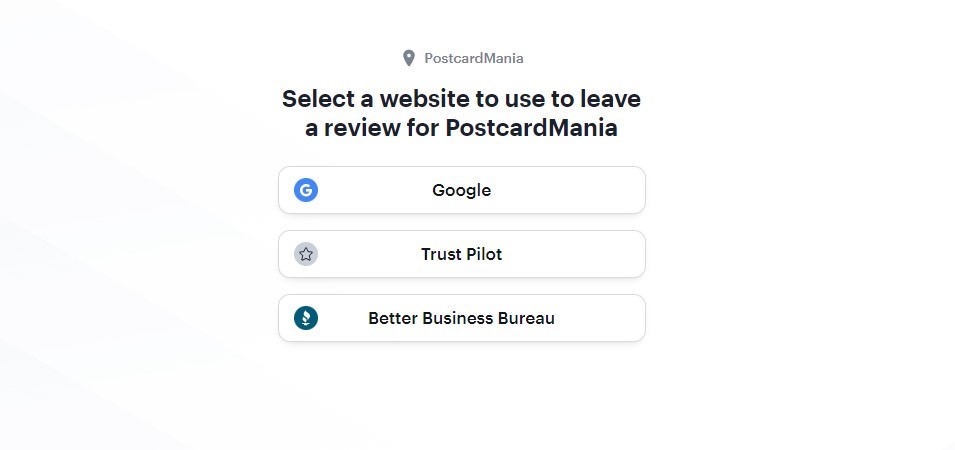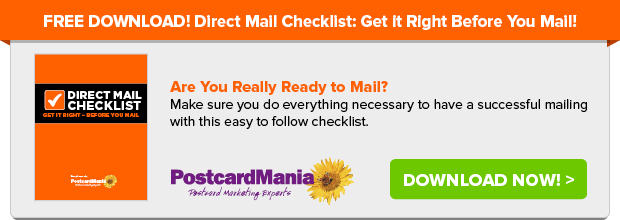We’ve Generated 2,000+ 5-Star Reviews — Here’s How
Updated on June 22, 2023I have a confession…
Like most people I love sweets, but I typically only indulge when there’s a BIG celebration – a worthwhile reason to do so.
Well recently I bought 2,000 cupcakes – yes that’s right – 2,000 cupcakes! One cupcake for each 5-star review we have ever accumulated since I started my company.
I shared them with everyone at PostcardMania to celebrate this huge accomplishment.
As a small business owner, I can imagine what you are thinking right now:
“How the heck did they do it???”
Let me tell you…
We struggled for years to turn our happy, satisfied customers into actual online reviews, and I know your pain. If you had told me that someday I’d have 2,000 5-star reviews, I honestly wouldn’t have believed it.
Three years ago, we had 486 total reviews after servicing more than 90,000 clients! It is a lot harder to get businesses to leave reviews for other businesses on Google as opposed to accumulating reviews from individual consumers, but I was up for the challenge!
Once we started implementing some key tactics, we increased our reviews to over 2,000! Our reviews shot up 84%, and now 5-star reviews make up 88% of all the reviews we receive.
Since I want ALL of my small business clients to succeed, I’m going to share with you how I arrived at 2,000 5-star reviews and what I do on a regular basis to keep ‘em coming.
You can apply this strategy today and start seeing results fast.
Let’s go on this journey together!
Why All Those Stars Are Important to Bringing in Business
The first nugget of truth I want to share with you is: don’t underestimate the power of the almighty review. People have so many options these days, and reviews are often the determining factor in someone’s choice to use a business or not.
Here are a few statistics that show why accumulating positive reviews is important:
- 93% of consumers read reviews before making a purchase. That’s almost everyone! (Dixa)
- 60% of consumers feel that the number of reviews a business has is critical when deciding whether to use its services. (brightlocal)
- On average, reviews produce an 18% uplift in sales. (markettailor)
- 79% of customers put as much weight on customer reviews as they do personal recommendations. (brightlocal)
- 86% of people hesitate to do business with a company if it has too many negative customer reviews. (invesp)
So if increasing your Google reviews isn’t on your priority list, it’s time to make a change.
Ask and You Shall Receive More Good Reviews
Let’s start by asking an important question:
What motivates you to leave a review?
The hard truth is that most people are more motivated to leave a review if their experience was negative. Most of the time it’s an act of passion. I know I’ve been there!
Dixa reported in 2023 from their own research that 47% of people spread the word about their positive experiences with businesses, and 95% of people shout from the rooftops about their negative experiences with businesses.
By all means, if a frustrated customer posts a complaint, address it right away. But the online reviews system is more than anything a numbers game. It’s the ratio of bad vs. good that matters the most. So you have to try extra hard to motivate the happy customers to leave good reviews to drown out the bad ones.
It may sound too simplistic, but all you have to do is ask!
The saying is famous for a reason: Ask and you shall receive.
According to research, 70% of consumers will leave a review if asked.
We actually have a rule on asking for reviews: every account manager is required to send at least 10 requests every week, and they hand-pick the customers who are most likely to leave a positive review.
Sure, the person could dismiss your request and not want to take the time to leave a review. But asking automatically forces them to consider helping you out. Most of the time, they do it!
Select the Best Review Platforms to Get the Best Results
I learned quickly that not every review platform is the same. Each one has different standards, and some are easier to use than others.
So where should your reviews live?
Let’s go over some of the most popular review platforms and my personal take on each one.
Google: Since Google is the number-one search engine site, it also houses the review platform with the most visibility and traffic. Anytime a customer searches for your business, Google reviews are one of the first things they see. Research shows that 72% of customers say they use Google reviews to find businesses. Google reviews can also give your Google Business Listing a boost in local map-based search results (the more reviews, the better). Google reviews are a MUST-HAVE for your small business. Prioritize these above all else.
Better Business Bureau: The Better Business Bureau (BBB) has been a trusted resource for business reputations since 1912. Including the famous blue BBB emblem on your website or marketing materials instantly lets prospects know you can be trusted. Positive reviews on the BBB platform are a signal that you not only provide good service, but that you also won’t take advantage of them or do shady business dealings. Anyone can submit a review on their website, but the BBB primarily functions as an organization that investigates consumer claims of business misconduct. Get an A+ rating by the BBB, and your credibility will improve.
Trust Pilot: While Google reviews are more like the table wines of reviews that you consume every day, and the BBB is the fancy chardonnay you use to impress guests, Trust Pilot falls in the middle in terms of circulation and respect. It’s the middle-shelf wine you look at for a bump-up from the everyday fare. They have more control over the review process and aim to create a space where consumers can provide feedback honestly and uncensored while businesses can respond and improve in a community-focused environment. They also try to weed out fake reviews and enable more fluidity on e-commerce sites. One downside is that Trust Pilot reviews have zero effect on Google search rankings.
And while we are on the subject of good review sites, I have to mention the one I mistrust the most — Yelp. I wrote a blog post on why I will never use Yelp again.
In short, Yelp prioritizes negative reviews and could do far more damage to your reputation than you anticipated. Best to stay off the platform and use the sites I mentioned. It’s a box wine at best!
Pay Particular Attention to How You ask for Reviews
Anyone at any time can go to any review platform and give a piece of their mind. So the particulars of when, where, and how you ask them are extremely important.
First off, the process of asking for reviews is so much easier when you have a central point of access for managing them. A couple of years back, I was looking for something to help us streamline the process so that clients could simply be sent one link to review us using any device.
We found Podium, and it was a game-changer for us because you can send out review requests for several platforms from one central dashboard.
Our account managers ask clients to review us any time they receive positive feedback, especially if it’s on the phone. Or, the account managers send the link once the order has been completed.
The Podium link is sent through a text message or email depending on the client’s preferred method of communication.
Pro-tip: Only send the review link to customers who will most likely give you a good review. This helps increase the likelihood that you will get more 5-star reviews from satisfied customers who are loyal to your brand.
Another good way to encourage people to click the link is to personalize the request as much as possible. Ideally, this will be on the phone, but here is an example of a written request:
Hi Susan!
Could you do me a giant favor? We are playing a game for great reviews, and I have really enjoyed working with you. If you mention my name, I get even more points!
If you loved my service, would you mind taking a few seconds to leave a quick review using the following link? It will direct you to our reviews page!
[link]
Thank you so much! –Nicole
After the client has clicked the link, they see this screen:

Customers have the option of leaving a review on Google, Trust Pilot, or the Better Business Bureau. Keep in mind that while Trust Pilot and the BBB are trusted review sites, customers will have to create an account before leaving a review, which could deter them. Creating an account adds time to the task, so if this is a concern, you could always direct them to Google alone, which doesn’t require setting up an account.
Here are some other key moments you could ask for a review during the customer journey:
- After a customer receives a product or service
- After a consultation or conversation
- After a customer tries out a new product
- After you receive praise from a client
- After you receive payment for a service
To sum it up, keep your request simple, short, and sweet.
This quote says it perfectly:
“I don’t do what I’m told, but I might do what you want if you ask me nicely.” –Cassandra Clare, Bestselling Author
So ask in the nicest way possible and make it super easy for them.
After we started using Podium in 2020, our reviews shot through the roof. In 2020, we accumulated 167 5-star reviews through Podium, and then it increased to 505 in 2021, and then 585 in 2022!
That is an increase of 250% from 2020 to 2022!
Here is our current breakdown of 5-Star Reviews by review platform:
Total 5-star Reviews: 2,070
BBB: 108
TrustPilot: 260
Google: 1,672
I would really love to see how Podium helps you increase your positive reviews. Even if you don’t use the service and simply start asking your customers to leave reviews more frequently, it’s an achievement worth celebrating!
Of course, you don’t have to throw a cupcake party like I did, but it certainly sweetens the moment.
Let me know if you try out the tips I have mentioned and what your results are! I’d love to hear from you, and as always, send me questions. I’m happy to help you on your journey to improving your business and getting the results you deserve.
Best,
Joy






